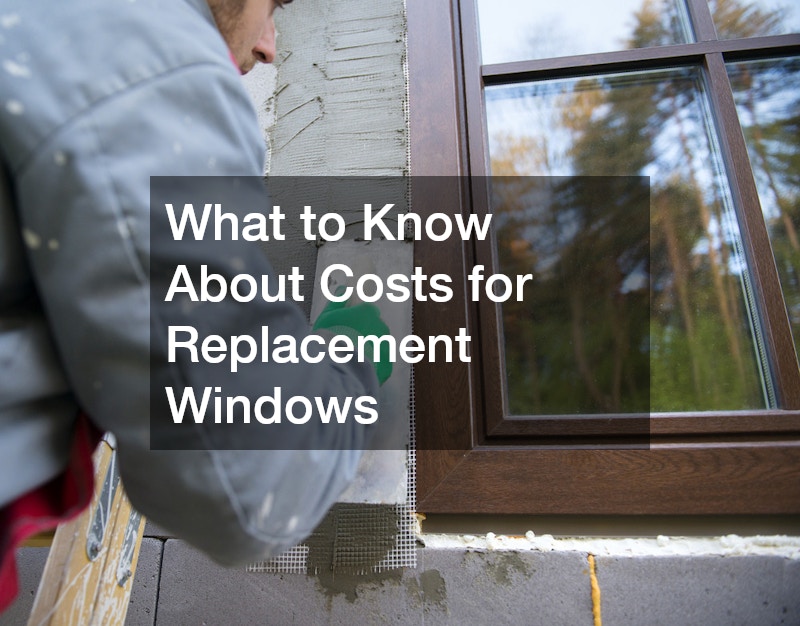

Understanding Replacement Windows
Replacement windows have become an integral upgrade for homeowners aiming to enhance their property’s value and aesthetic appeal. These windows improve the home’s energy efficiency and contribute to its overall comfort. Before delving deeper into costs, it is crucial to understand what replacement windows entail and their general benefits.
Understanding the different types of replacement windows can help homeowners make more informed choices about their investments.
Unlike new construction windows, replacement windows are designed to fit into the existing window frame, making their installation less invasive and more cost-effective. This approach allows homeowners to update their windows without the need to alter the surrounding frame, conservatively saving on both time and resources. Understanding this fundamental difference is essential in comprehending the overall costs involved. This method also tends to reduce the disruption to daily life during the installation process.
In regions like Colorado Springs, CO, the choice of replacement windows is influenced by varying weather conditions which can significantly impact energy savings over time. Incorporating energy-efficient windows that withstand temperature extremes is a vital consideration. Hence, selecting the right type of replacement windows not only affects initial costs but also ongoing savings on energy bills. Homeowners in such climates should prioritize windows with high insulation ratings to maximize their energy efficiency benefits.
Factors Influencing the Cost of Replacement Windows
Several factors contribute to the overall cost of replacement windows, including materials, size, and additional features. Primarily, the type of material used—such as vinyl, wood, or fiberglass—can greatly influence the price. Vinyl is often the most cost-effective choice, while wood typically comes at a premium due to its classic appearance and durability. The quality of materials also affects the window’s lifespan, which can influence long-term value.
Another key factor is the size and shape of the replacement windows. Custom-sized windows or oversized models require more complex manufacturing processes, thereby increasing expenses. Standard sizes, however, tend to be more budget-friendly, offering wider availability and quicker installation. If a homeowner is working within a tight budget, opting for standard sizes can be a more cost-effective approach.
Additionally, certain features like double or triple glazing, low-E coatings, and specialized locking mechanisms can add to the overall cost. While these features come with an initial increase in expenses, they can significantly improve the window’s performance, offering long-term benefits and savings. Homeowners should weigh the immediate costs against potential energy savings when deciding on these enhancements. Many of these features can also contribute to a more comfortable and quieter home environment.
Cost-Saving Tips for Replacement Windows
Investing in replacement windows doesn’t have to break the bank if it’s approached strategically. First, getting multiple quotes from different suppliers can ensure you’re getting the best deal. It’s crucial to compare not only the prices but also the reputation and warranty offerings of the suppliers. This way, you can balance cost savings with the reliability of the windows you choose.
Secondly, homeowners can consider the timing of their purchase for potential savings. Off-season periods may offer discounts as suppliers look to maintain steady business during slower months. Choosing standard window sizes over custom options can also help significantly cut costs. Additionally, scheduling installation during off-peak months can often result in lower labor fees.
Finally, evaluating payment options can offer additional financial benefits. Some suppliers provide financing options that offer flexible payment plans, making the initial investment more manageable. Homeowners should also explore local programs or incentives that promote energy-efficient upgrades, which might offer rebates or tax credits for certain kinds of replacement windows. These incentives can help offset the cost of the windows and make the investment more affordable in the long term.
Weighing Costs Versus Benefits
While replacement windows can be a significant investment, the benefits they offer can outweigh their initial costs. Improved energy efficiency leads to lower heating and cooling bills, which can quickly offset the initial outlay. Additionally, new windows can significantly boost curb appeal and overall property value. The increase in home value can be especially beneficial if you are considering selling the property in the near future.
The increased comfort inside the home due to reduced drafts and noise insulation is another significant benefit. Modern replacement windows are also designed to enhance security, providing better performance against forced entry compared to older models. Homeowners should consider these factors when evaluating the return on investment. Additionally, many replacement windows are built with low maintenance features, saving time and money on upkeep.
Ultimately, replacement windows are not merely a cost but an investment in the home’s long-term livability and market value. Proper research and strategic purchasing can mitigate costs while maximizing benefits. By exploring options and making informed decisions, homeowners can ensure that their investment in replacement windows is both prudent and effective. Taking the time to choose the right windows can lead to substantial benefits in both comfort and financial savings over time.
.



